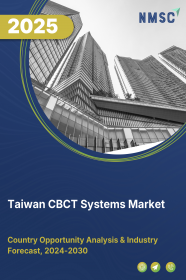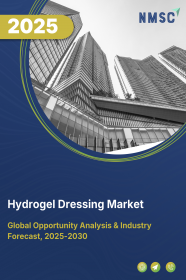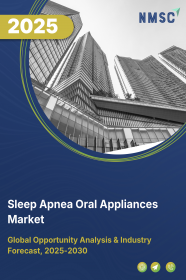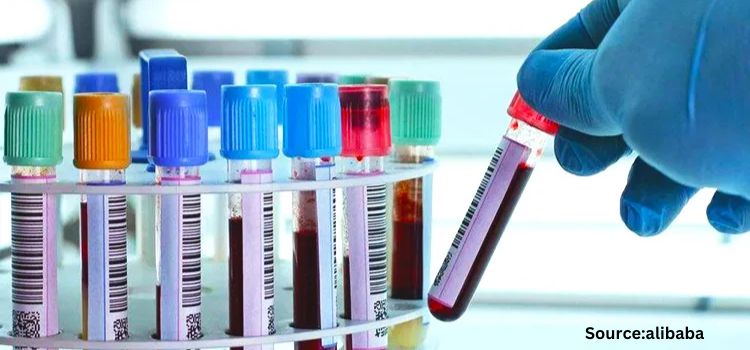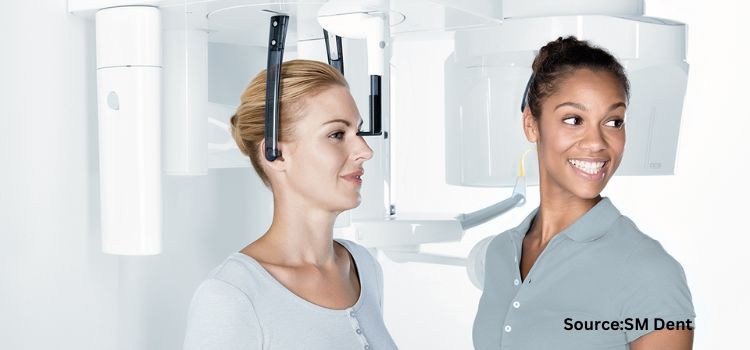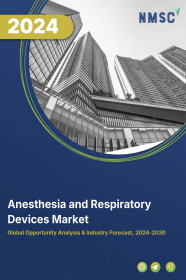
Anesthesia and Respiratory Devices Market by Type (Anesthesia Devices and Respiratory Devices) and by End User (Hospitals, Clinics, Homecare Settings, Ambulatory Surgical Centers, and Others) - Global Opportunity Analysis and Industry Forecast 2023–2030
US Tariff Impact on Anesthesia and Respiratory Devices Market
Trump Tariffs Are Reshaping Global Business
Market Definition
The global Anesthesia and Respiratory Devices Market size was valued at USD 41.73 billion in 2022, and is predicted to reach USD 73.39 billion by 2030, with a CAGR of 7.3% from 2023 to 2030.
Anesthesia devices are used during surgical procedures to control pain, breathing, blood pressure, blood flow, and heart rate & rhythm. Respiratory care devices are used for diagnosis and treatment of respiratory diseases such as chronic obstructive pulmonary disease (COPD), asthma, tuberculosis, and pneumonia. These devices are important to offer improved care to patients undergoing acute and chronic respiratory diseases.
Market Dynamics and Trend
Rise in prevalence of respiratory diseases such as asthma, COPD, and sleep apnea has led to increase in demand for anesthesia and respiratory devices. According to the World Health Organization, in May 2022, Asthma affected an estimated 262 million people and caused 4,55,000 deaths in 2019. Moreover, growth in number of surgeries, both inpatient and outpatient, has led to increase in demand for anesthesia devices. These devices are essential for inducing and maintaining unconsciousness during surgery. They deliver precise amounts of anesthetic gases and medications to ensure patient comfort and safety, which in turn increases the demand for anesthesia and respiratory devices.
In addition, as the population ages, incidences of chronic diseases increase. Elderly people are more prone to respiratory diseases and require more medical interventions to manage their health, thus raising demand for respiratory diseases. For instance, according to the WHO, between 2015 and 2050, the proportion of the world's population over 60 years will nearly double from 12% to 22%, which is expected to further contribute toward growth of the market.
However, low adoption of new technologies for treatment, owing to reluctance from physicians and high cost of anesthesia and respiratory devices, are expected to limit their adoption, especially in low-income countries where healthcare infrastructure is not well-developed. On the contrary, introduction of AI, which can be used to develop smarter anesthesia and respiratory devices that can automatically adjust to patient needs create opportunities for the market growth. AI can also be used to analyze patient data, helping clinicians to make better decisions about treatment and management.
Market Segmentation and Scope of the Study
The global anesthesia and respiratory devices market report is segmented on the basis of type, end user, and geography. On the basis of type, the market is categorized into anesthesia devices and respiratory devices. The anesthesia devices segment is further classified into machines and disposables. The machine segment further divided into delivery machines, monitors, ventilators, and workstations. The disposable segment is sub-divided into disposable masks and disposable accessories.
On the basis of respiratory devices, the market is divided into equipment, ventilators, nebulizers, humidifiers, inhalers, oxygen concentrators, disposables, and measurement devices. Furthermore, on the basis of equipment, the market is sub-classified into positive airway pressure, bi-level positive airway pressure devices, and continuous positive airway pressure devices and on the basis of ventilators, it is categorized into adult ventilators and neonatal ventilators. On the basis of nebulizers, the market is sub-categorized into pneumatic nebulizers, mesh nebulizers, and ultrasonic nebulizers.
On the basis of humidifiers, the market is sub-segmented into heat humidifiers, heated wire breathing circuits, heat exchangers, and passes over humidifiers. On the basis of inhalers, it is classified into dry powdered inhalers and metered-dose inhaler. On the basis of oxygen concentrators, it is divided into fixed oxygen concentrators, portable oxygen concentrators, and reusable resuscitators. On the basis of disposables, the market is sub-categorized into disposable oxygen masks, resuscitators, tracheostomy tubes, and oxygen cannula.
On the basis of measurement devices, it is divided into pulse oximeters, capnography, spirometers, and peak flow meters. On the basis of end user, the market is classified into hospitals, clinics, homecare settings, ambulatory surgical centers, and others. Geographically, it is analyzed across North America, Europe, Asia-Pacific, and RoW.
Geographical analysis
North America holds a dominant share of the anesthesia and respiratory devices market, and is expected to continue to dominate during the forecast period. The rise in cardiovascular diseases in the region is driving increased adoption of surgical interventions, leading to a higher demand for anesthesia devices. Moreover, rise in healthcare expenditure of individuals in the region further contributes toward growth of the market. According to the Centers for Medicare & Medicaid Services, the national healthcare industry reached 4.3 trillion in 2021 in the U.S. compared to USD 4.1 trillion in 2020.
However, growth in geriatric population in countries such as Japan and China significantly boost the anesthesia and respiratory devices market growth. As the population ages, incidences of chronic obstructive pulmonary disease (COPD), sleep apnea, and other respiratory conditions also increase, leading to a greater need for respiratory devices such as ventilators, nebulizers, and oxygen concentrators. According to the U.S. Census Bureau report as of June 2022, the population in Asia is aging faster than any other region in the world. There were an estimated 414 million Asian people aged 65 and older, which is around 20% higher than the total U.S. population.
In addition, rise in prevalence of chronic respiratory diseases such as chronic obstructive pulmonary disease (COPD), asthma, and sleep apnea in Asia-Pacific countries such as including China is accelerating the growth of the market in the region. COPD is the most prevalent airway disease, about 99 million people estimated to suffer from the disease. According to the Global Burden of Disease Study, COPD has been the fifth leading cause of death in China, which drives growth of the market.
Competitive Landscape
Various market players operating in the global anesthesia and respiratory devices industry include Teleflex Incorporated, Sunmed, Smiths Group Plc., Resmed, Inc., Medtronic Plc., Masimo Corporation, Koninklijke Philips, Invacare Corporation, Hamilton Medical AG, and Mdoloris Medical Systems. These market players are adopting various joint venture strategies and planning expansion of businesses across various regions to maintain their dominance in the global market.
For instances, in March 2022, Koninklijke Philips expanded the network of clinical partners to set new standard of care for early diagnosis and treatment of lung cancer. To implement this, it launched Philips Lung Suite, which is a revolutionary 3D real-time imaging platform that addresses the need for earlier precision diagnosis and minimally-invasive treatment.
In addition, in November 2021, Mdoloris Medical Systems secured regulatory clearance for its HFVI MOC-9 high-frequency variability index monitor in Japan. The HFVI MOC-9 technology was the first monitoring solution for patients undergoing anesthesia and analgosedation in Japan.
Key Benefits
-
The report provides quantitative analysis and estimations of the anesthesia and respiratory devices market from 2023 to 2030, which assists in identifying the prevailing market opportunities.
-
The study comprises a deep dive analysis of the anesthesia and respiratory devices market including current and future trends to depict prevalent investment pockets in the market.
-
Information related to key drivers, restraints, and opportunities and their impact on the global market is provided in the report.
-
Competitive analysis of the players, along with their market share is provided in the report.
-
SWOT analysis and Porters Five Forces model is elaborated in the study.
-
Value chain analysis in the market study provides a clear picture of roles of stakeholders
Anesthesia and Respiratory Devices Market Key Segments
By Type
-
Anesthesia Devices
-
Machines
-
Delivery Machines
-
Monitors
-
Ventilators
-
Workstations
-
-
Disposables
-
Disposable Masks
-
Disposable Accessories
-
-
-
Respiratory Devices
-
Equipment
-
Positive Airway Pressure
-
Bi-Level Positive Airway Pressure Devices
-
Continuous Positive Airway Pressure Devices
-
-
Ventilators
-
Adult Ventilators
-
Neonatal Ventilators
-
-
Nebulizers
-
Pneumatic Nebulizers
-
Mesh Nebulizers
-
Ultrasonic Nebulizers
-
-
Humidifiers
-
Heat Humidifiers
-
Heated Wire Breathing Circuits
-
Heat Exchangers
-
Pass Over Humidifiers
-
-
Inhalers
-
Dry Powdered Inhalers
-
Metered-Dose Inhaler
-
-
Oxygen Concentrators
-
Fixed Oxygen Concentrators
-
Portable Oxygen Concentrators and Reusable Resuscitators
-
-
Disposables
-
Disposable Oxygen Masks
-
Resuscitators
-
Tracheostomy Tubes
-
Oxygen Cannula
-
-
Measurement Devices
-
Pulse Oximeters
-
Capnography
-
Spirometers
-
Peak Flow Meters
-
-
By End User
-
Hospitals
-
Clinics
-
Homecare Settings
-
Ambulatory Surgical Centers
-
Others
By Regional
-
North America
-
U.S
-
Canada
-
Mexico
-
-
Europe
-
U.K
-
Germany
-
France
-
Italy
-
Spain
-
Denmark
-
Netherlands
-
Finland
-
Sweden
-
Norway
-
Russia
-
Rest of Europe
-
-
Asia-Pacific
-
China
-
Japan
-
India
-
South Korea
-
Australia
-
Indonesia
-
Singapore
-
Taiwan
-
Thailand
-
Rest of Asia-Pacific
-
-
RoW
-
Latin America
-
Middle East
-
Africa
-
Key Players
-
Teleflex Incorporated
-
Sunmed
-
Smith’s Group Plc.
-
Resmed, Inc.
-
Medtronic Plc.
-
Masimo Corporation
-
Koninklijke Philips
-
Invacare Corporation
-
Hamilton Medical AG
-
Mdoloris Medical Systems

















 Speak to Our Analyst
Speak to Our Analyst



